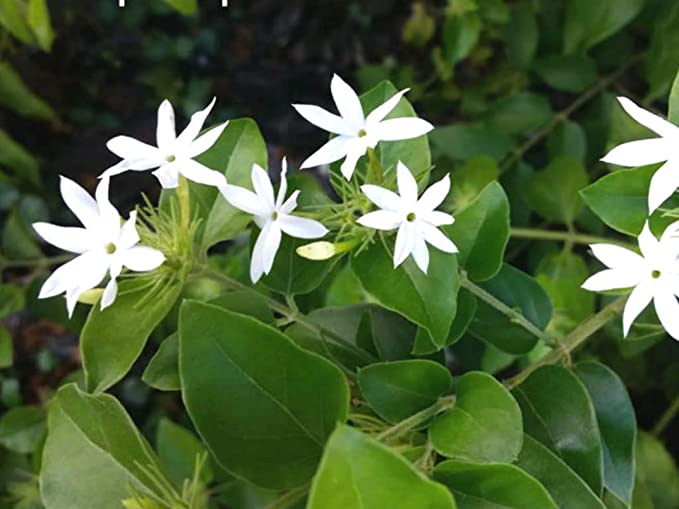Jasminum multiflorum 'Downy Jasmine' 3 gallon
- In Stock
Jasminum, the genus of true jasmines, comprises over 200 species from the tropics and warm temperate regions of the Old World (Green, 2004). The name presumably derives from the Arabic and Persian "yâ
Jasminum, the genus of true jasmines, comprises over 200 species from the tropics and warm temperate regions of the Old World (Green, 2004). The name presumably derives from the Arabic and Persian "yâsmîn' or 'yasaman' (Green, 1965), which means "gift of gods". Jasmines have an important socio-cultural and ornamental value, especially in India and Southeast Asian countries. They have been cultivated for centuries for their attractive foliage and for their flowers' sweet fragrance, a prized characteristic of this genus. Jasminum has been divided into five sections based on leaf arrangement, number of leaflets and flower colour: sect. Jasminum (with opposite, pinnately-compound leaves), sect. Trifoliolata (with opposite, trifoliolate leaves and white flowers), sect. Primulina (with opposite, trifoliolate leaves and yellow flowers), sect. Alternifolia (with alternate, simple or compound leaves), and sect. Unifoliolata (with opposite, simple leaves) (De Juana, 2015). J. multiflorum belongs to sect. Unifoliolata, the largest of all, with more than 100 species. This sectional classification is very often used, especially in identification keys of the species.
Lorem ipsum dolor sit amet, consectetur adipiscing elit. Ut lobortis malesuada mi id tristique. Sed ipsum nisi, dapibus at faucibus non, dictum a diam. Nunc vitae interdum diam. Sed finibus, justo vel maximus facilisis, sapien turpis euismod tellus, vulputate semper diam ipsum vel tellus.applied clearfix to the tab-content to rid of the gap between the tab and the content


